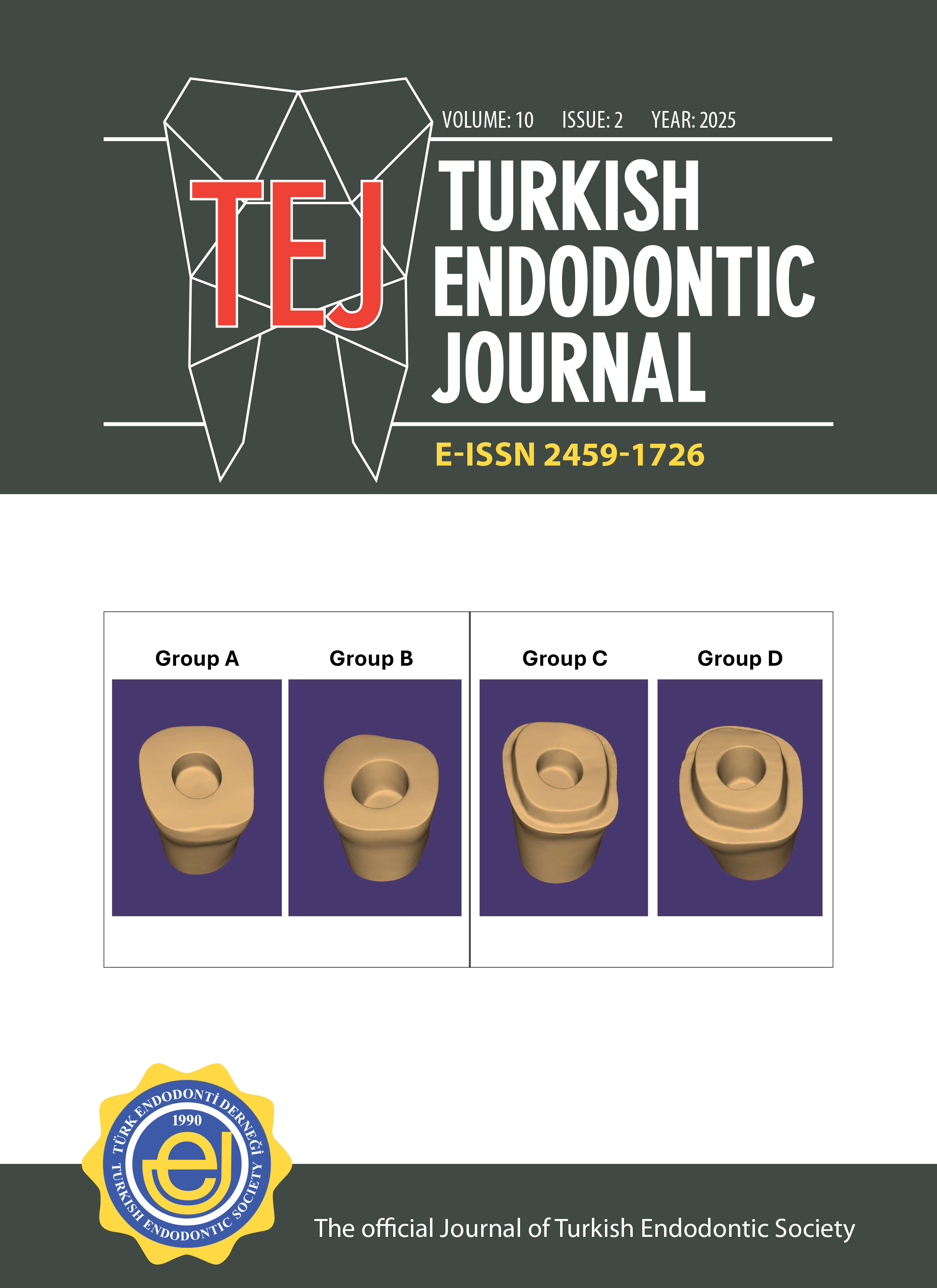Evaluation of biomechanical properties of endodontic files with different pitch by finite element analysis
Mehmet Eskibağlar1, Serkan Erdem21Department of Endodontics, Faculty of Dentisry, Firat University, Elazığ, Türkiye2Department of Mechanical Engineering, Faculty of Engineering, Firat University, Elazığ, Türkiye
Purpose: The purpose of this study was to evaluate the stress distribution of endodontic nickel-titanium (Ni-Ti) rotary files with different pitches in bending and torsion tests using finite element analysis (FEA).
Methods: Finite element models of superelastic Ni-Ti endodontic rotary instrument files with three different pitches (12, 15, and 18) were created using SolidWorks software. All endodontic files were modeled with the same length, apical diameter, and cross-sectional geometry. These models were transferred to ANSYS software for analysis. Tests to evaluate the flexibility and torsional stiffness of the files were performed using the FEA method, according to the ISO 3630-1 specification. The results obtained were calculated using the von Mises stress.
Results: The stiffness and maximum stress decreased as the pitch value increased. According to the test results, the 18 pitch file system exhibited higher flexibility than the 12 pitch and 15 pitch file systems when subjected to bending. In terms of torsional resistance, the 12 pitch rotary file showed higher torsional resistance than the 15 pitch and 18 pitch endodontic files.
Conclusion: Clinicians should be aware of the geometric differences in rotary files and use the appropriate file for clinical situations in addition to the manufacturer’s instructions.
Manuscript Language: English



















